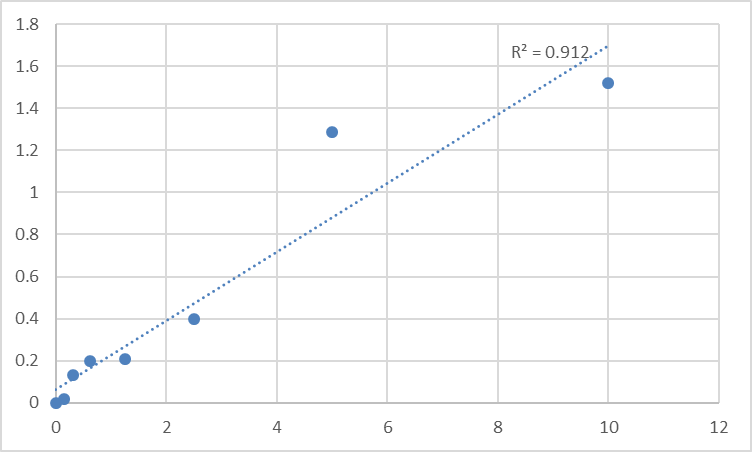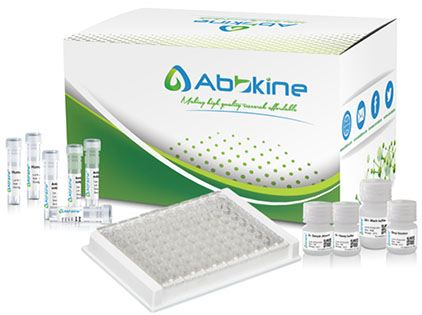| Product name | Human Programmed cell death protein 5 (PDCD5) ELISA Kit |
| Reactivity | Human |
| Applications | ELISA |
| Applications notes | This Human Programmed cell death protein 5 (PDCD5) ELISA Kit employs a two-site sandwich ELISA to quantitate PDCD5 in samples. An antibody specific for PDCD5 has been pre-coated onto a microplate. Standards and samples are pipetted into the wells and anyPDCD5 present is bound by the immobilized antibody. After removing any unbound substances, a biotin-conjugated antibody specific for PDCD5 is added to the wells. After washing, Streptavidin conjugated Horseradish Peroxidase (HRP) is added to the wells. Following a wash to remove any unbound avidin-enzyme reagent, a substrate solution is added to the wells and color develops in proportion to the amount of PDCD5 bound in the initial step. The color development is stopped and the intensity of the color is measured. |
| Detection method | Colorimetric |
| SampleType | Cell culture supernatants, Other biological fluids, Plasma, Serum |
| Assay type | Sandwich ELISA (quantitative) |
| Assay duration | Multiple steps standard sandwich ELISA assay with a working time of 3-5 hours. It depends on the experience of the operation person. |
| Alternative | PDCD5; MGC9294; TFAR19; TF1 cell apoptosis-related gene 19; TFAR19 novel apoptosis-related |
| Kit components | • Human Programmed cell death protein 5 microplate • Human Programmed cell death protein 5 standard • Human Programmed cell death protein 5 detect antibody • Streptavidin-HRP • Standard diluent • Assay buffer • HRP substrate • Stop solution • Wash buffer • Plate covers |
| Features & Benefits | Human Programmed cell death protein 5 (PDCD5) ELISA Kit has high sensitivity and excellent specificity for detection of Human PDCD5. No significant cross-reactivity or interference between Human PDCD5 and analogues was observed. |
| Calibration range | Please inquire |
| Limit of detection | Please inquire |
| Usage notes | • Do not mix components from different kit lots or use reagents beyond the kit expiration date. • Allow all reagents to warm to room temperature for at least 30 minutes before opening. • Pre-rinse the pipet tip with reagent, use fresh pipet tips for each sample, standard and reagent to avoid contamination. • Unused wells must be kept desiccated at 4 °C in the sealed bag provided. • Mix Thoroughly is very important for the result. It is recommended using low frequency oscillator or slight hand shaking every 10 minutes. • It is recommended that all samples and standards be assayed in duplicate or triplicate. |
| Storage instructions | The unopened kit should be stored at 2 - 8°C. After opening, please store refer to protocols. |
| Shipping | Gel pack with blue ice. |
| Precautions | The product listed herein is for research use only and is not intended for use in human or clinical diagnosis. Suggested applications of our products are not recommendations to use our products in violation of any patent or as a license. We cannot be responsible for patent infringements or other violations that may occur with the use of this product. |
| Background | PDCD5 encodes a protein expressed in tumor cells during apoptosis independent of the apoptosis-inducing stimuli. Prior to apoptosis induction, this gene product is distributed in both the nucleus and cytoplasm. Once apoptosis is induced, the level of this protein increases and by relocation from the cytoplasm, it accumulates in the nucleus. Although its exact function is not defined, this protein is thought to play an early and universal role in apoptosis.This TFAR19 gene encodes a protein of 125 amino acids, with an ATG initiation codon at nucleotides 25-27. It contains a cAMP- and cGMP-dependent protein kinase phosphorylation site, multiple protein kinase C phosphorylation sites, and a casein kinase II phosphorylation site. It shares significant homology to the corresponding proteins of species ranging from yeast to mice. |
| Gene ID | 9141 |
| Alternative | PDCD5; MGC9294; TFAR19; TF1 cell apoptosis-related gene 19; TFAR19 novel apoptosis-related |
| Accession | O14737 |

Fig.1. Human Programmed cell death protein 5 (PDCD5) Standard Curve.

Fig.2. Abbkine ELISA kit is series of sandwich ELISA to quantitate specific protein in samples.
You must be logged in to post a review.
Reviews
There are no reviews yet.